The Star Trek Movies: What’s The Best Order To Watch Them In
The best way to watch the Star Trek franchise is to start with the Motion Picture and finish with Star Trek Beyond
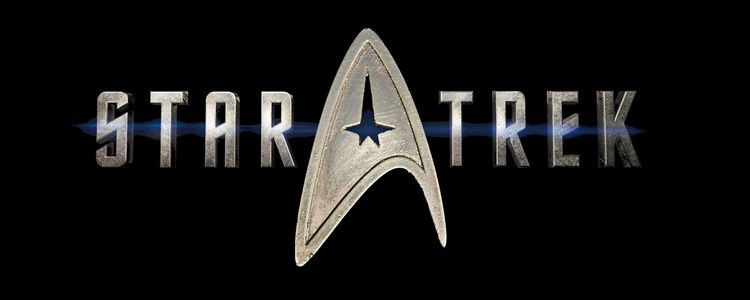
As a franchise that’s been around for the better part of six decades, few other properties have as many viewable hours as Star Trek.
Between the series, the companion pieces, and the Star Trek movies, you could start now and it would be months (or maybe years) before you got through everything the franchise had to offer.
William Shatner and Leonard Nimoy brought it to the masses for sure, but it has expanded in such a way that few could have ever seen. We’ve even got Star Trek: Prodigy out there for the kids these days.
With the Star Trek movies, there are lots of questions. Where should you start? Where should you finish? Where is the Klingon Empire anyway? We have all the answers. Here’s the ultimate guide to how to watch all the Star Trek movies in the right order.
Original Series Timeline
Star Trek: The Motion Picture
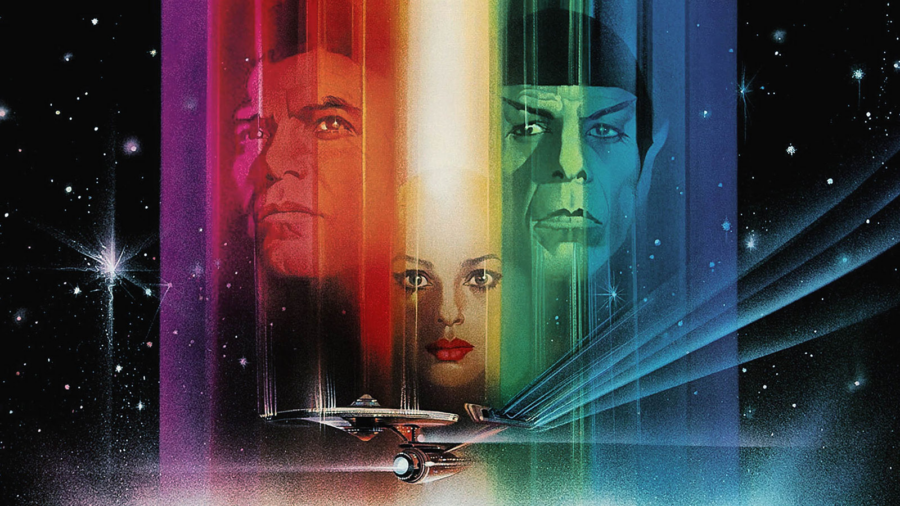
Average Review Score: 48%
Box Office Total: $139 million
Premiere Date: December 7, 1979
In-Universe Date: 2273
Any properly ordered Star Trek movie viewing marathon starts here with 1979’s Star Trek: The Motion Picture, starring the original crew of the Enterprise. After the original series ran for three seasons from 1966 to 1969, cementing William Shatner, Leonard Nimoy, and company, firmly into the zeitgeist, the first movie in the franchise came around about a decade after the show left the network.
It wasn’t until the show saw continued popularity in syndication that Paramount was convinced to get the gang back together and put out a full-length film in theaters. It was the right choice.
In this first movie, Shatner’s James T. Kirk is now Admiral Kirk, and he’s only on board the Enterprise to supervise her refit under the command of her new captain, Decker. A strange cloud entity approaches Earth and the Enterprise is tasked with investigating.
Citing his experience, Kirk uses his rank to take back command of his ship and stop the strange alien presence from destroying Earth. Along the way, there’s a lot of introspection on the nature of humanity and intelligence. It’s a thoughtful film, less about shooting and more about exploring big concepts than some of the later films.
Though beloved by many now, it was not initially well-received. Still, Star Trek: The Motion Picture earned $139 million on its $44 million budget, and a movie franchise was born.
Star Trek II: The Wrath Of Khan
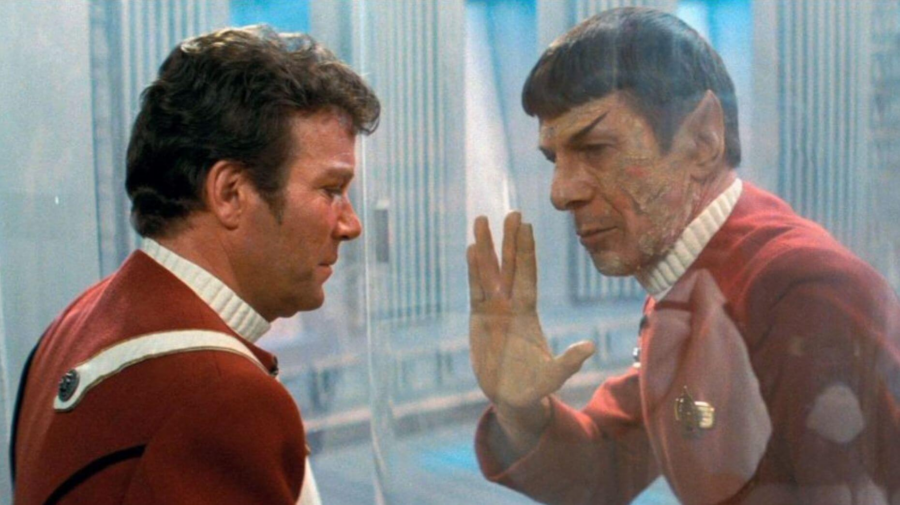
Average Review Score: 86%
Box Office Total: $87 million
Premiere Date: June 4, 1982
In-Universe Date: 2285
In terms of more iconic performances, protagonist-antagonist interplay, story, and critical reception, Star Trek II: The Wrath of Khan does stand out above the original film. Franchise creator Gene Roddenberry had to step aside for this one, though the original cast did all return.
Bringing back Ricardo Montalban’s Khan as the genetically superior foil for Shatner’s Kirk added a layer to this movie that the previous one simply didn’t have.
Writer-director Nicholas Meyer completely changed up the tone from the first movie, grounding his film in a more realistic naval style. Meyer’s ideas would become the foundation for all future movies using the original Enterprise crew. It worked. Star Trek II was a huge hit with audiences and critics. It’s still widely regarded as one of the best science fiction films ever made.
Star Trek III: The Search For Spock
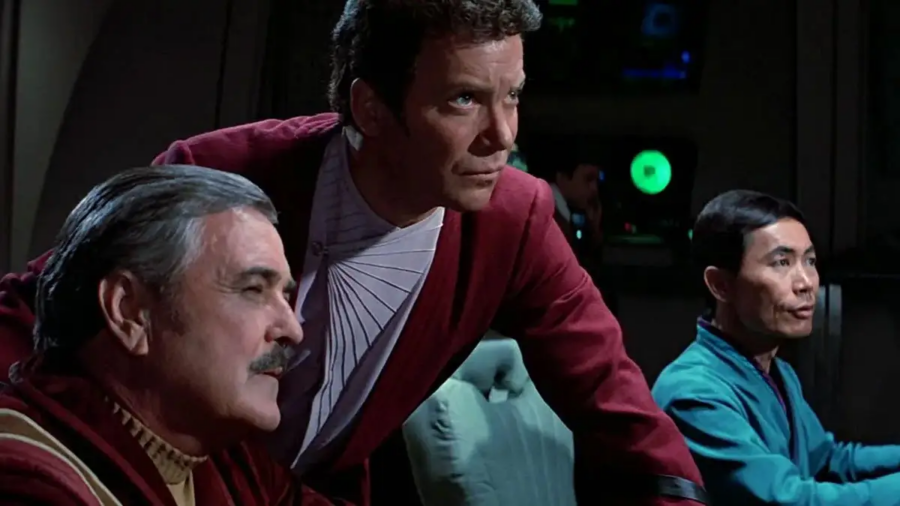
Average Review Score: 79%
Box Office Total: $96 million
Premiere Date: June 1, 1984
In-Universe Date: 2285
They could have called this, “The Way We Got Spock Back In Star Trek!”. Following The Wrath of Khan, which saw Spock lose his life, this move pieces around in order to get Leonard Nimoy back into the franchise. Nimoy only agreed to do the movie on the condition that he was allowed to direct, and so he ends up as the man in charge behind the camera.
From a marketing and popularity standpoint, this made a lot of sense even if the way they go about it is a bit convoluted. In The Search for Spock, we do get some throwbacks to the original series.
The Search for Spock’s strength is in the way it humanizes the franchise’s characters even further. The crew goes through trauma together and survives, losing loved ones along the way. In general, the third Star Trek movie worked because it leaned space opera in a way that fans of the franchise have always gravitated to in its simplest form.
Star Trek IV: The Voyage Home
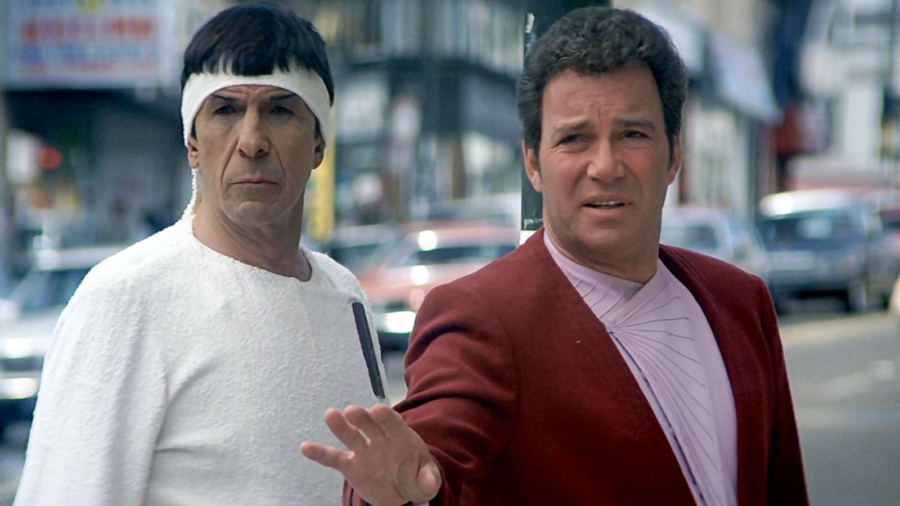
Average Review Score: 82%
Box Office Total: $133 million
Premiere Date: November 26, 1986
In-Universe Date: 2286
Star Trek IV completed what some regard as a trilogy, comprising Star Trek II, Star Trek III, and Star Trek IV. All three movies tell one linear story and III and IV, in particular, don’t even really work as stand-alone films. So don’t skip any of the previous movies on your way to watching this one.
Depending on your leanings, some consider The Voyage Home to be the best Star Trek movie and it’s easy to see why. As was Search for Spock, it is also directed by Leonard Nimoy, after proving he had the chops. Star Trek IV was a huge critical hit and crushed at the box office as well. It was divergent from previous Star Trek movies in a few key areas.
For starters, having the Enterprise (now a Bird of Prey) crew transported back in time to the “present-day” gave a juxtaposition we really hadn’t seen before in the franchise. It grounded the characters a bit more in reality, seemingly setting the stage for what would come in the future for this world.
Star Trek IV is also funny, really funny, and on purpose. Nimoy surprised everyone by proving he has a talent for directing comedy, he would even go on to direct other comedy movies after his work on this light-in-tone Trek movie.
The Voyage Home is also part (or mostly) an environmental film, meant to shine a light on topics like animal extinction, nuclear power, and some other hot-button topics of the 80s. This really could have bombed, but it didn’t and the movie ended up wrapping up this particular storyline for the characters that started in Wrath of Khan.
Star Trek V: The Final Frontier
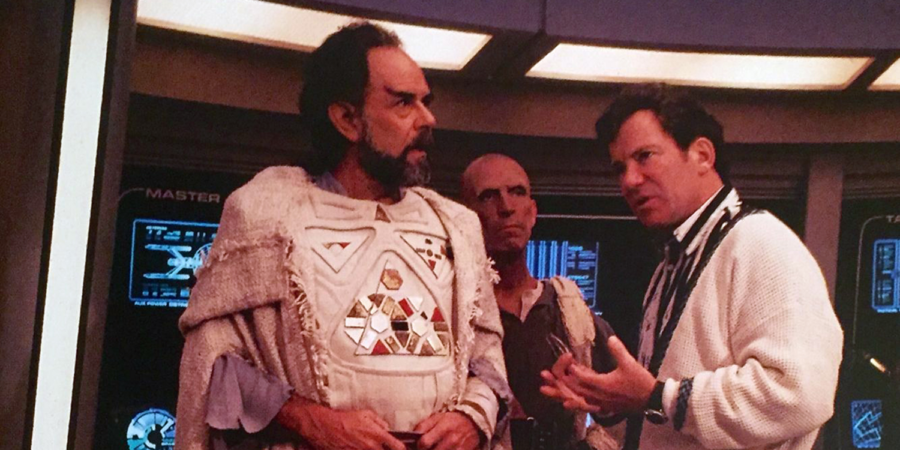
Average Review Score: 22%
Box Office Total: $70 million
Premiere Date: June 9, 1989
In-Universe Date: 2287
Now it was William Shatner’s turn to get behind the camera for a Star Trek movie. Following up on Leonard Nimoy’s success in the director’s chair, why not turn things over to the other star of the franchise. What could go wrong? Well, kind of everything.
The Final Frontier could have been called “The Search for God” and where the previous movie went with an environmental angle, this one decided to get a little (or a lot) religious and spiritual. It starts with a camping trip and ends with the crew in the furthest reaches of space meeting the almighty.
The Final Frontier was heavy-handed in its tone and underwhelming in its effects. There’s a reason this one finished with the lowest critically-rated film of the entire franchise. Spock’s brother Sybock is on a quest to find God and the rest of the group is along for the proverbial ride. The film ends up answering really nothing at all except the question, “Should we have let William Shatner direct?” That and, “What does God need with a starship?”
Unlike the previous three movies, however, this is a more stand-alone adventure. So if for some insane reason you want to skip ahead to Star Trek V, you won’t be totally lost.
Star Trek VI: The Undiscovered Country
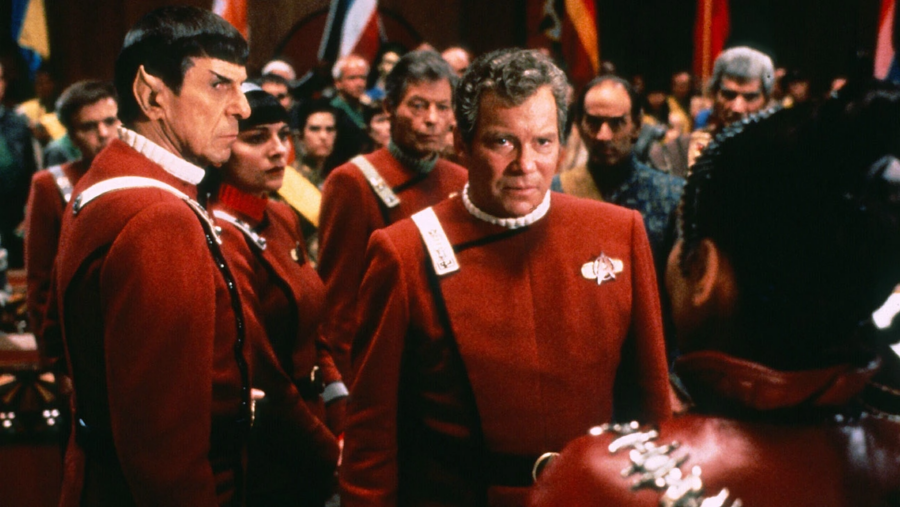
Average Review Score: 82%
Box Office Total: $97 million
Premiere Date: December 6, 1991
In-Universe Date: 2293
Desperate for a bounce-back both at the box office and on the critical side of the Star Trek ledger, while trying to line things up for a 25th-anniversary media barnstorming, we got this movie. The Undiscovered Country was planned as and was indeed the final one with the original cast and crew, a fitting ending considering the timing of the release.
Wanting to wrap up the Klingon as the antagonist arc they’d had since basically the beginning of the series, this movie lays the groundwork for the two sides to finally mend galactic fences. Kirk isn’t into the idea for obvious reasons, though begrudgingly agrees before he’s framed for a murder he didn’t commit.
With the galaxy’s geopolitical relations in the balance, so begins a whodunit to find out who doesn’t want peace in the universe. Ultimately they get to the bottom of it, and this iteration of the franchise gets something of a bow on it. Kirk ends up passing the torch to others who will pick up the Star Trek mantle in the future.
Star Trek VI is usually regarded as one of the franchise’s best movies make sure you don’t skip it.
Star Trek: Generations
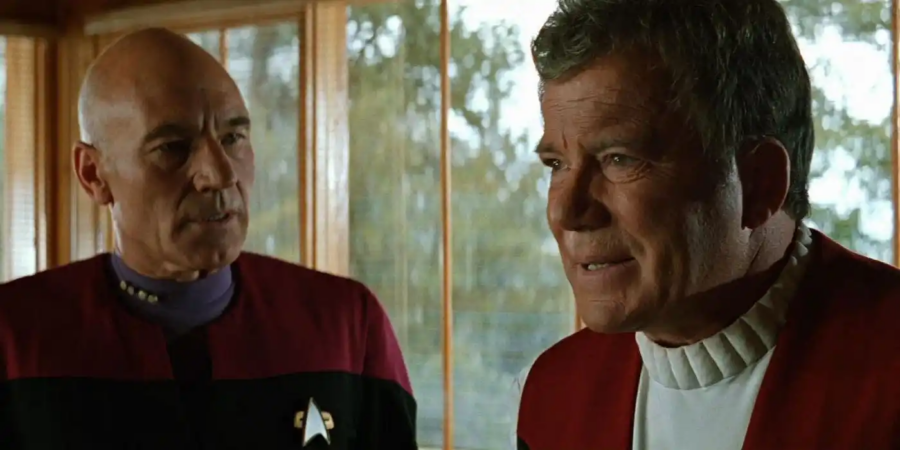
Average Review Score: 47%
Box Office Total: $120 million
Premiere Date: November 18, 1994
In-Universe Date: 2293 & 2371
In its essence, Star Trek: Generation was supposed to pass the baton from the original series to the TNG cast which had just wrapped up its seven-season run the previous spring. Now heading down the big-budget movie path, the Star Trek folks saw it fitting to put the two casts (Original and TNG) together in what ended up being a muddled mess of a movie.
Not everyone from the original cast agreed to take part (Nimoy and Kelly sat it out because they hated the script) and William Shatner’s Captain Kirk ends up dying for very little reason except to make sure no one ever asked for him to come back? It’s not totally clear.
Generations managed to go a light-year wide and an inch thin for its script, never really honing in on what exactly it was out to accomplish. Considering this was supposed to set the stage for the next run of movies, it was a bit of a misfire. Still, it did well enough to get the crew another movie, and that turned out to be a very good thing.
Star Trek: First Contact
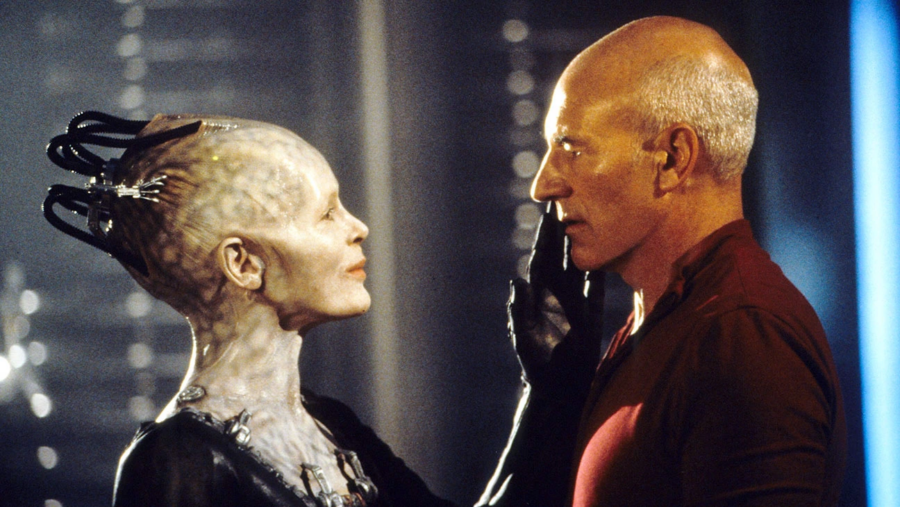
Average Review Score: 92%
Box Office Total: $146 million
Premiere Date: November 22, 1996
In-Universe Date: 2373
In Jonathan Frakes’s directorial debut, First Contact set the Star Trek movies back on the right footing. It’s also the first movie with only The Next Generation cast.
Frakes pulls double-duty of course behind the lens and as Riker. Pulling on the threads from the series, specifically from Picard getting assimilated in “The Best of Both Worlds”, the movie takes us back to the moment when Earth makes First Contact with its first-ever alien species.
Because the Borg are trying to prevent this from ever happening (via time travel), it sets Picard and company on a mission to essentially maintain the same course of historical events. In this way, the future (or the present) hangs in the balance, and the movie also deals with a variety of other issues for the characters.
Picard must overcome his connection (and assimilation) to the Borg and Data gets a little taste (or touch) of humanity as a bit of a Borg bribe. The movie totally works on every level and usually competes among fans with Star Trek II, IV, and VI for the title of best Star Trek movie.
Star Trek: Insurrection
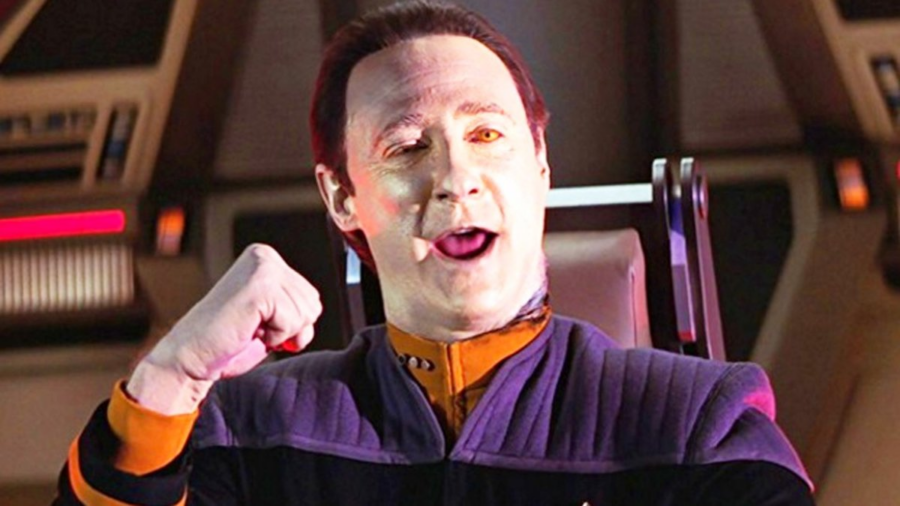
Average Review Score: 54%
Box Office Total: $118 million
Premiere Date: December 11, 1998
In-Universe Date: 2375
A lot of the goodwill built on the back of First Contact was quickly undone with Insurrection. In mostly a standalone story where the rest of the Star Trek universe is concerned, the movie tries to ask some central questions about the role of the Starfleet in the rest of the galaxy but is mostly just pretty boring.
Frakes was once again directing, and the entire TNG cast is back in the saddle, but the movie just kind of doesn’t go anywhere or do anything of note. Critics rightfully complained that it mostly felt like a multipart episode of the series rather than a big-budget, big-screen movie. And they weren’t wrong.
The budget increased but the box office receipts went down compared to the previous film.
Star Trek: Nemesis
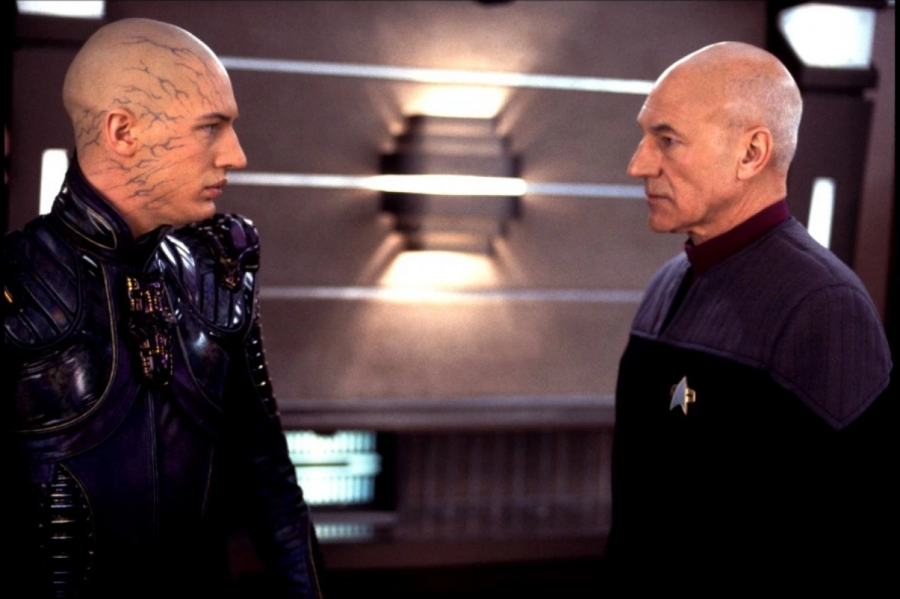
Average Review Score: 38%
Box Office Total: $67 million
Premiere Date: December 13, 2002
In-Universe Date: 2379
Any hope of more movies involving The Next Generation crew basically died with this flick. Coming out four years after Insurrection and a decade after the series had gone off the air, Nemesis was pretty much a mess.
Sure, it got Tom Hardy into the Star Trek franchise, but did it really do anything else besides giving us another Data? Not really.
There might have been some interesting ways to take this story of identity and choice, but it doesn’t do anything particularly well. There had been plans for a fifth movie with the TNG crew, but after this one stunk it up at the box office and with critics alike, that path was scrapped.
It made sense. Though First Contact gave the promise of engaging stories within this universe on the big screen, they just could make it happen on a consistent basis.
The Kelvin Universe
The following movies are part of what Star Trek folk label as the Kelvin Universe. It’s a subject of much debate within the fandom about the need and/ or delivery for these movies because they involve characters recast from the original series.
Is this, in and of itself, an issue? Not really. This happens with franchises all of the time. But the problems stem from another place (it isn’t the Gamma Quadrant) and there’s a reason that despite happening before the events of the Original Timeline of movies, we are putting them last on the list.
However, the first movie in this series was written specifically as an alternate universe. The movie begins with a time travel event that creates a universe entirely separate from the other Star Trek movies where things happen differently.
So these films are not so much set before the other Star Trek movies as in a tangent dimension which basically has nothing to do with them at all.
Star Trek
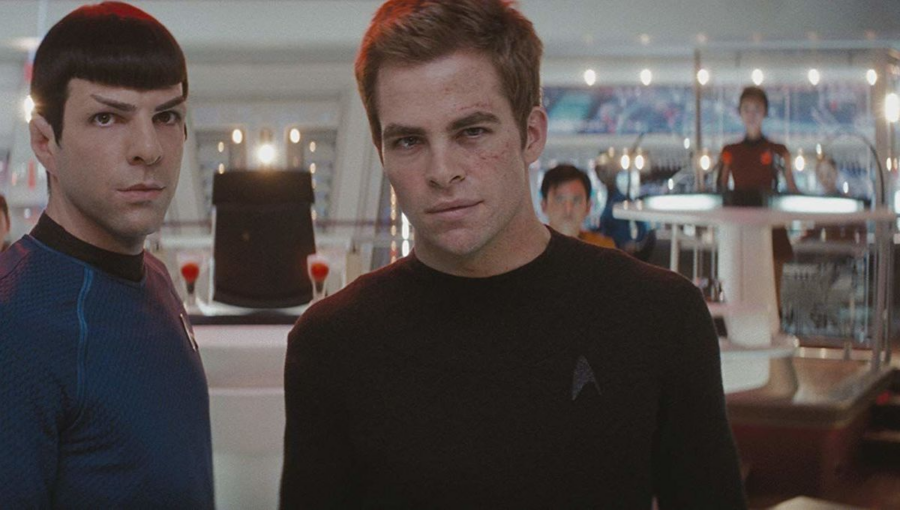
Average Review Score: 94%
Box Office Total: $385 million
Premiere Date: May 8, 2009
Alternate-Universe Date: 2233, 2258
Four years after the mess of Nemesis and 18 years after the original crew had taken their last big-screen jump, it was prequel time for the franchise. Putting JJ Abrams in the director’s chair and recasting the original characters into their younger versions was exactly the shot in the arm the Star Trek franchise needed.
The crew was young and good-looking, the director was basically just making his way to the big screen (Mission: Impossible III was a few years before) and the franchise desperately needed a win for a new generation of viewers. They got it here.
Star Trek with Chris Pine in the Captain Kirk role ended up being the second-biggest box office performance for the franchise and the best when it came to critical reception on review aggregators.
It gave us some solid backstory on the main players in Kirk and Spock in particular while also bringing back Leonard Nimoy for a pretty fantastic sendoff.
Star Trek Into Darkness
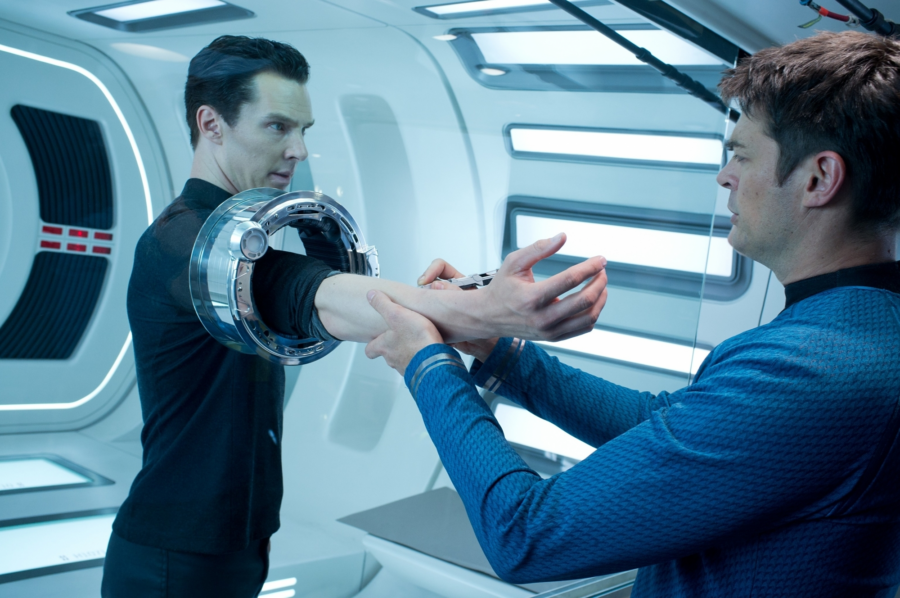
Average Review Score: 84%
Box Office Total: $467 million
Premiere Date: May 16, 2013
Alternate-Universe Date: 2259
Star Trek Into Darkness ends up being an interesting inflection point for the franchise. On a critical and monetary level, the movie looked like a win across the board.
The $467 million worldwide is easily the leader in the clubhouse for box office earnings and the 84% Rotten Tomatoes score points to a movie critics enjoyed. It’s big on the set pieces, pays homage to one of the key plot lines (and villains) of the original series and overall is immensely watchable from an outsider’s point-of-view.
But Star Trek fans had major issues with it, and then by proxy, the Kelvin crew in general. The movie isn’t all that Star Trek in its approach mostly because it’s a JJ Abrams movie first. Therein lay the problem for many fans who thought a cool concept (Khan) was wasted. As a result, it’s often ranked by fans as the worst thing Star Trek has ever produced.
Star Trek Beyond
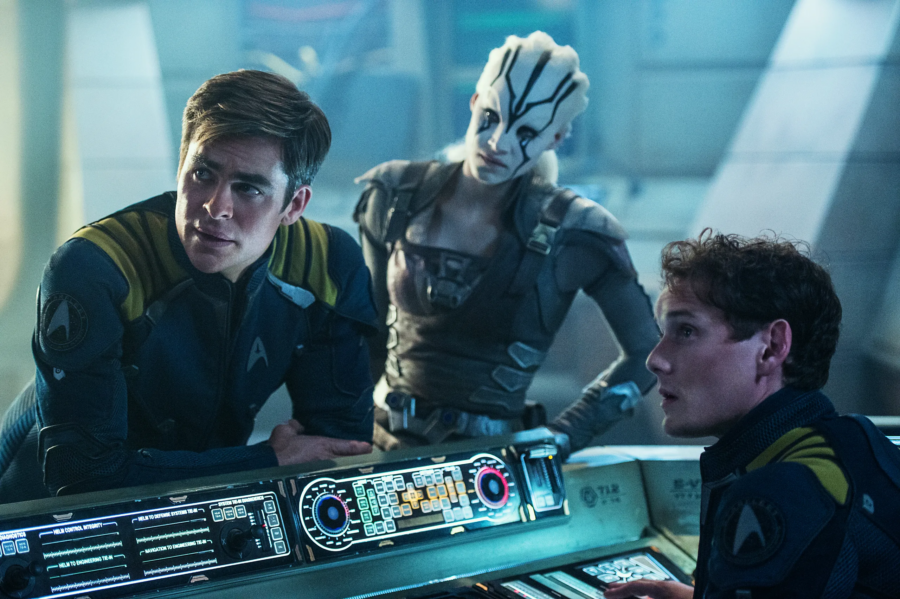
Average Review Score: 86%
Box Office Total: $343 million
Premiere Date: July 22, 2016
Alternate-Universe Date: 2263
Justin Lin took over directorial duties in this one and from a stylistic perspective, the movie definitely works. In a new day and age of blockbuster tentpoles for studios, this is the kind of movie that’s getting made in order to appeal to a larger audience. It’s Star Trek at its core, but more than that Beyond is the kind of movie studios want to pump a ton of money into. Financially, this makes sense.
For fans, this often viewed as the only Kelvin-verse movie that actually feels like a Star Trek movie. It’s a fun adventure, with a lot of big set pieces, and a few interesting things to say. This is the point when the Kelvin movies really started firing on all cylinders.
THE PLANNED STAR TREK 4 WITH CHRIS PINE APPEARS TO BE CANCELED
With 13 Star Trek movies in the books now, the future is still hanging out there for this franchise. There have been more stops and starts on a follow-up to Star Trek Beyond than I care to recount here, but just know that it’s basically been “in development” for the better part of six years now.
There had been some hope on the horizon that we would see Chris Pine and company return to the mix with a Star Trek 4. It was really looking to be the case, but it appears the studio has taken that plan off the table for right now. While it would seem like we would get that movie at some point, for now it looks like the above flicks are going to have to suit our Star Trek needs.












